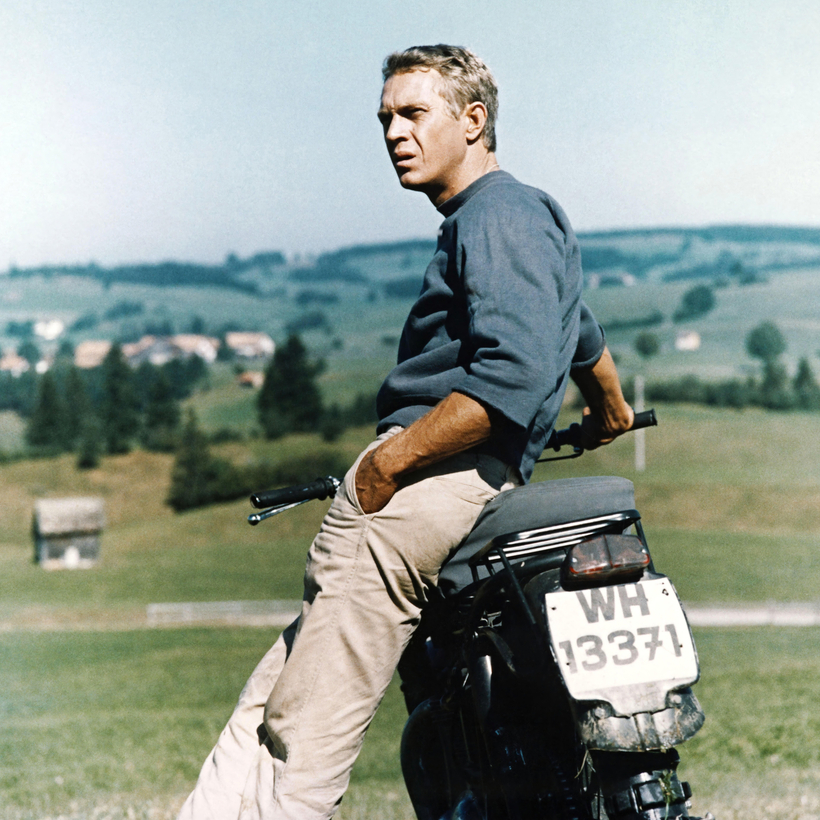The Great Escape, the 1963 World War II P.O.W. film, is plenty rousing, with Steve McQueen gunning his stolen Nazi motorcycle over a barbed-wire fence and a score anyone can whistle. It was a big hit in theaters and a mainstay on TV for another decade.
But The Great Escape isn’t Vertigo or 2001: A Space Odyssey, and its director, John Sturges (no relation to Preston), wasn’t Alfred Hitchcock or Stanley Kubrick, or even Quentin Tarantino. I wouldn’t have thought that The Great Escape was worthy of fine-grain, book-length scrutiny, that it could sustain such focus beyond a couple of pages.

In his own feat of derring-do, Dana Polan, a professor of cinema studies at New York University, gives us Dreams of Flight: “The Great Escape” in American Film and Culture, 288 smart and lively pages that will delight film nerds as well as fans of writers knowing a lot about an uncool subject and caring even more.
Beyond a mere “making of” or standard-issue academic exegesis of a seemingly inconsequential piece of pop-cultural detritus, Dreams of Flight is an act of devotion, a work of extreme connoisseurship that allots far less space to on-set gossip, say, than it does to the jacket of the movie’s soundtrack LP or subsequent parodies of the movie in TV commercials and on The Simpsons. Even the endnotes are less a parade of citations than a miscellany of ephemera that didn’t fit in the main text.
In other words, Dreams of Flight is short on dish but long on passion and the nervy assumption that someone else will care. You have to admire that. I do, anyway.
At the Drive-In
As with so many movie fixations, Polan’s dates to childhood, when he first saw The Great Escape at a drive-in in the mid-60s. (In those days, films kicked around for years instead of being broomed out of theaters within weeks.) The movie recounts an actual escape from a supposedly high-security German P.O.W. camp, Stalag Luft 3, reserved for downed Allied fliers.

The source material was a best-selling history of the 1944 breakout written by Paul Brickhill, an Australian fighter pilot who was held at the camp after being shot down over Tunisia in 1943. He helped plot the escape, but tunnel-triggered claustrophobia kept him on the sidelines at the climax.
The film is all about process: a tense drama of men working together in assigned roles, forging documents, scrounging materials, jerry-rigging tools, digging not one but three tunnels under and beyond the camp’s barbed-wire stockades. It’s half a caper movie, as Polan points out, but with Nazis. An opening title card promises that, aside from some composite characters and time compression, “every detail of the escape is the way it really happened.”
The friskiest liberty the film took was putting Yanks in the foreground of a largely Commonwealth affair. (While Americans were held at Stalag Luft 3 and took part in the planning, they were moved to another area of the compound before the escape.) Thus, aside from McQueen slouching around in a leather jacket, blue sweatshirt, and tailored chinos, the movie plotters include an almost as cool James Garner (in dark single-breasted officer’s coat paired with white turtleneck). James Coburn and Charles Bronson were also in the cast, further sops to U.S. audiences, although they played an Australian and a stray Pole, respectively—and clearly studied with the same accent coach who taught Dick Van Dyke how to talk Cockney for Mary Poppins.

Among the British actors on hand: Richard Attenborough, Donald Pleasence, and an already platinum-haired David McCallum, soon to be a TV heartthrob on The Man from U.N.C.L.E.
Sturges owned as butch a filmography as any old-school Hollywood director, encompassing not just war films and Westerns (Bad Day at Black Rock, 1955; The Magnificent Seven, 1960) but also more specialized genres such as problematic Rat Pack lark (Sergeants 3, 1962), hapless late-60s would-be blockbuster (Ice Station Zebra, 1968), and nearly-too-late-period John Wayne (McQ, 1974).
The friskiest liberty the film took was putting Yanks in the foreground of a largely Commonwealth affair. Enter Steve McQueen slouching around in a leather jacket.
Polan tries to make a case for Sturges as more than just a competent meat-and-potatoes action director, offering lucid analyses of the blocking, camerawork, and editing of several long dialogue scenes: “I think it is mark of the crafting behind The Great Escape that this film, so commonly thought of as an ‘action picture,’ doesn’t seem to slow down when characters meet to talk—something that happens a lot through the first part of the film…. This is a kind of functional filmmaking, but it is no less accomplished … than is the more demonstrative sort.”

Maybe. Re-watching the movie I was less impressed with Sturges’s technique than I was with his cast’s gift for remaining engaged, and engaging, while rattling off huge text blocks of exposition. Special kudos to Attenborough in this regard.
Polan makes a stronger case for The Great Escape as a kind of missing link between the golden-age studio system and the “New Hollywood” of the late 1960s and 1970s. This is true simply as a matter of timeline—The Great Escape came out the same year that Cleopatra almost capsized Twentieth Century Fox—but thematically, too. Spoiler: of the movie’s 76 escapees, 73 are rounded back up, and (as was the case in real life) 50 of those are summarily machine-gunned by the Nazis. “Things like this weren’t supposed to happen in the movies,” Polan writes, channeling his shocked younger self back at the drive-in.
But then, for a decade or so, “things like this” were nearly the only things happening on-screen. The men mowed down in The Great Escape weren’t antiheroes, they weren’t questioning the rightness of the Allied cause, but Polan posits the downbeat ending as a harbinger for the more nihilistic, anti-Establishment likes of Bonnie and Clyde (1967), Cool Hand Luke (1967), and The Wild Bunch (1969)—movies where almost no one gets out alive—as well as overt, even farcical anti-war pictures such as Catch-22 and M*A*S*H (both 1970).

Sturges’s movie is far from a protest film, but, as Polan puts it, “The Great Escape—seemingly still devoted massively to the clear-cut us/them morality that drove classic ‘gung ho’ war movies, seemingly still committed to the notion of ‘good war’—was groping toward something ambivalent, confusing, morally complex, and questioning, something that tapped into the then-budding sentiments of many people.” By 1971, that shift would include at least one of the former Stalag Luft 3 plotters, whom Polan quotes as denigrating their effort, in hindsight, as “an act of typical military madness, a futile, empty gesture and a needless sacrifice of fifty lives.”
In the movie’s penultimate scene, Garner’s character, returned to the camp after the breakout, weary and bloodied but alive, learns of the mass execution. “Do you think it was worth the price?” he asks a British officer who stayed behind. “Well, it depends on your point of view,” the officer responds coolly, the ambiguity left hanging in the air. It’s only grown more resonant since.
Bruce Handy is a journalist and the author of Wild Things: The Joy of Reading Children’s Literature as an Adult

